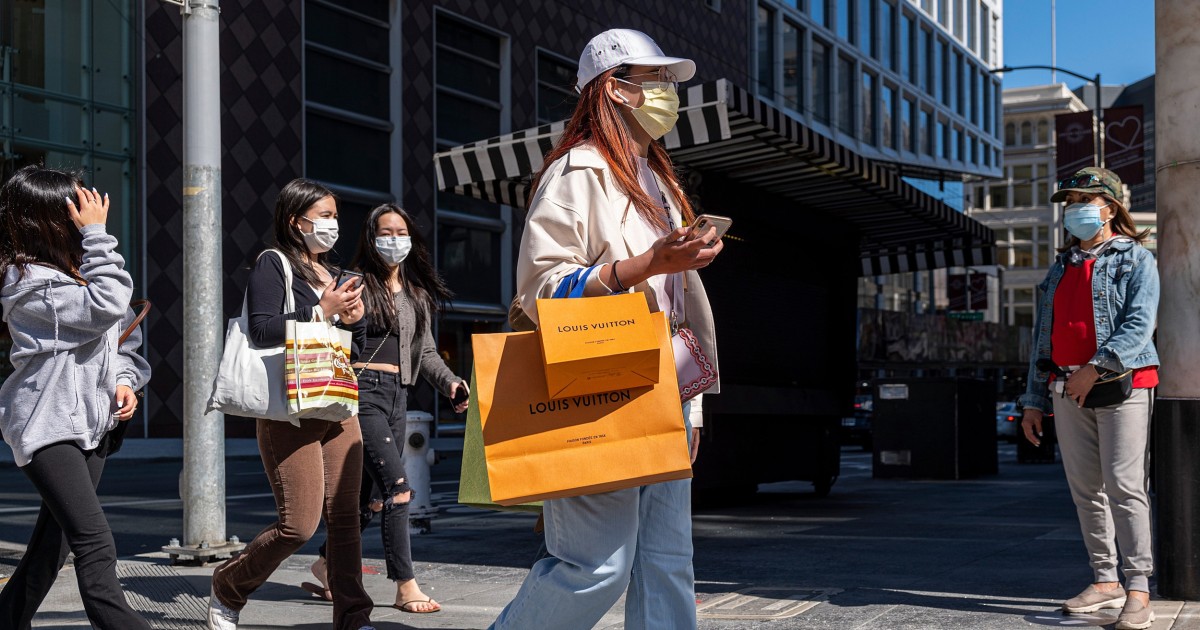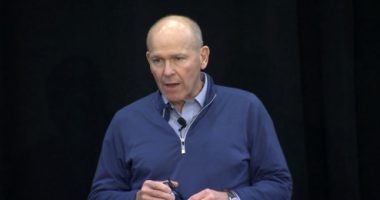
Consumer prices rose for a third straight month in June, jumping by 5.4 percent year over year, as soaring consumer demand continues to outstrip supply.
The monthly Consumer Price Index, released Tuesday by the Bureau of Labor Statistics, is a broad measure of inflation for goods and services including groceries, airfares, cars and clothing, and shows how quickly prices are rising.
The overall price jumps came in higher than economists’ expectations of 5 percent. Used cars continued to drive the increase, rising 10.5 percent. Food prices are still ratcheting up, increasing 0.8 percent, even higher than May’s 0.4 percent increase. A few key items declined, with medical care and household furnishings and operations falling in June.
The price hikes are another side effect of the coronavirus pandemic. From the supermarket to the furniture store to the gas station, consumers are paying more to get the same — or even less. Shoppers are finding limited selection, slower service, longer waitlists, even shrunken ice cream containers.
Unleashed consumers continue to bid up goods and services, which are in tight supply due to shipping delays and worker shortages. That pushes up prices, as companies try to control demand. Some of those businesses are passing on increased costs to consumers. Meanwhile, stimulus spending and loose fiscal policy encourages shoppers to spend.
Economists believe the consumer-driven economy needs some inflation to keep going and growing. The Fed has said the effects are “transitory” and has held firm to keeping interest rates low to stimulate growth. It’s a fine line for policymakers to walk.
“Too much and people accelerate spending to stay ahead of price rises, which of course has the effect of delivering even more inflation. And, as prices generally rise in advance of wages, consumers feel consistently behind the eight-ball,” said Daniel Alpert, a managing partner at Westwood Capital and a senior fellow in financial macroeconomics at Cornell Law School, in an email.
With deflation, “commerce slows as no one is in a rush to spend on that which might cost less tomorrow, and wages don’t grow…but asset bubbles form as interest rates collapse and capital is mis-allocated,” he said.
But inflation that is too high also has problems. If prices rise too far, too fast, workers’ dollars don’t go as far. Investors may take their money elsewhere to get a better return.
Inflation is often presented as one big number that affects the economy in powerful seen and unseen ways, since the rate of price increases indicate how quickly the economy is heating up.
May’s CPI data showed that inflation was up 5 percent, the highest monthly increase in 13 years. For families already struggling to pay the bills, any price increase is hard.
But it’s also a matter of perspective. What matters just as much as the overall number is the time frame it measures and where the starting point is set.
That 5 percent seen in May came as the economy was rebounding off the lows of the pandemic-induced recession as the starting point, or “base.” During the pandemic, demand and production has fallen at different points because of a health crisis, not underlying economic weakness. Going up from this artificial low makes the increase look even bigger, a distortion known as the “base effect.”
Measured from June 2019, before the pandemic hit, inflation has indeed gone up 5 percent, but over two years.
That comes to an inflation rate of just 2.5 percent per year, a half percentage point ahead of the Federal Reserve’s target rate of 2 percent. The economic engine is running hot. But it’s not on fire.
“Recent inflation figures have been more pronounced due to pent-up demand and supply chain constraints, but also because of the low bar of comparison against 2020 when price levels actually declined,” said Greg McBride, chief financial analyst for Bankrate.com, in an email. “This does support the viewpoint that the inflation we’re seeing is ‘transitory,’ however we can’t ignore the chorus of business owners pointing to rising labor costs. That tends to lead to sustained price increases.”
Individual categories of goods from the overall index show that not all items are rising at the same rate. Some are even falling.
Used car prices are up 27.5 percent since June 2019 as shipping and production issues have crimped the supply of new cars, shifting demand. In May, increases in Used Car Prices alone account for one-third of the overall CPI increase, according to the Bureau of Labor Statistics. Gas is up nearly 9 percent during this time, and food at home is up, almost 6 percent.
But some items are down: apparel is lower by 2 percent; toys, 5 percent; and televisions, 11 percent.
Other items are tracking the overall inflation and are slightly up, like new cars and trucks, rent, and child care.
This means that some consumers will get hit harder. Others may actually be able to save in parts of their budget, or not face as much rising prices. Don’t buy a used car, and you’ll swerve around one of the biggest inflation potholes.
There’s more critical context as well. The Fed has said these spikes should settle back down into healthy growth as it pursues the goal of “full employment,” where everyone who wants a job has one. However, recent Fed minutes show that the recent jump in prices has the central bank considering removing some fiscal supports earlier than it previously anticipated.
The personal savings rate has gone up 75 percent as consumers saved more and spent less during the pandemic and received stimulus payment.
Wages have essentially tracked inflation, with average hourly earnings up 2.5 percent since June 2019. Prices have increased, but so has the ability of most consumers to pay them.
Source: | This article originally belongs to Nbcnews.com









